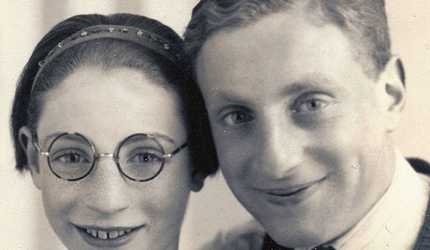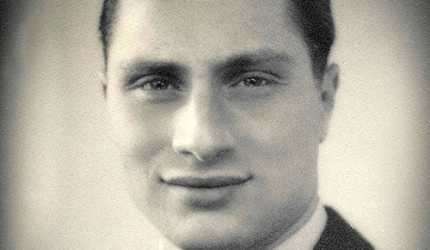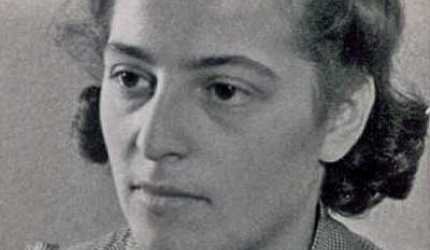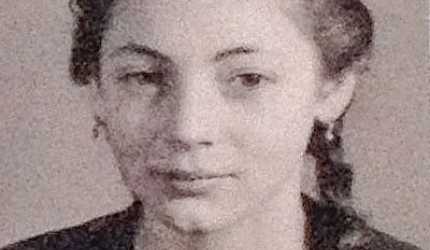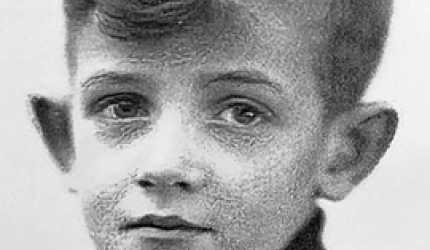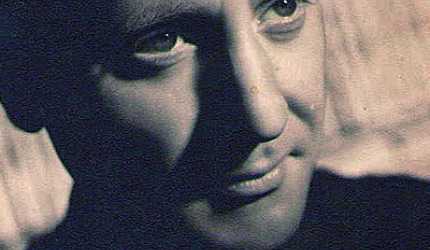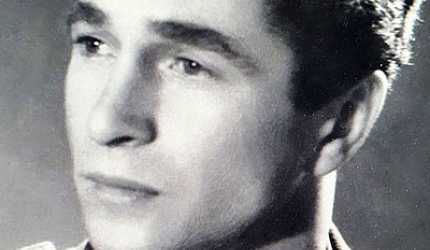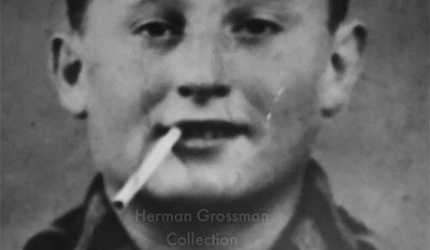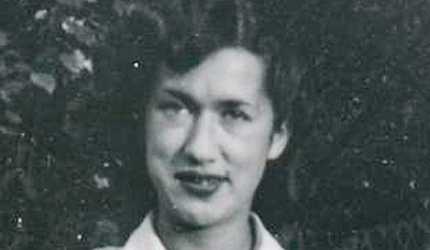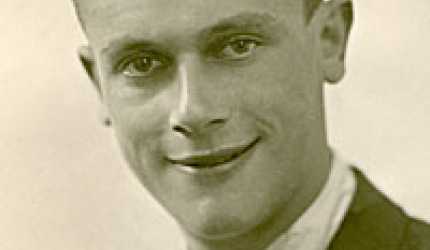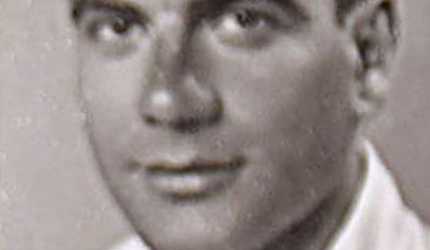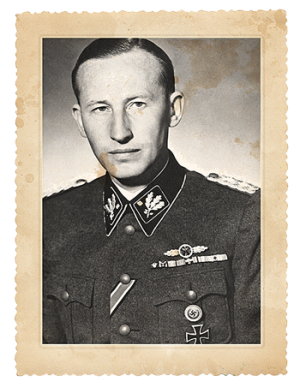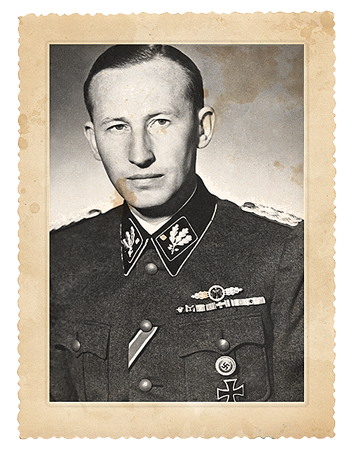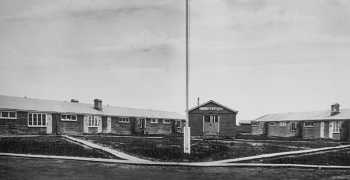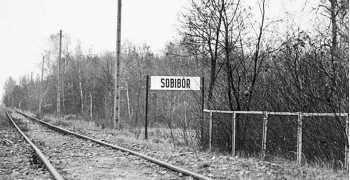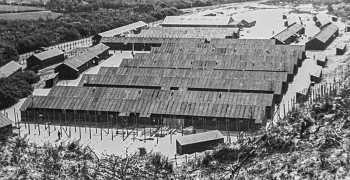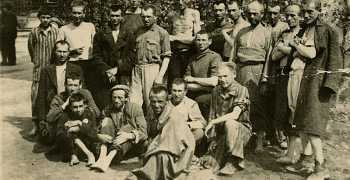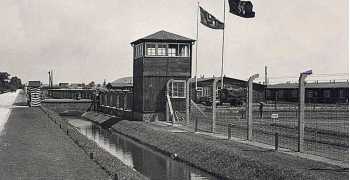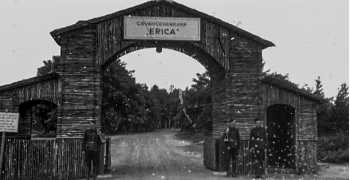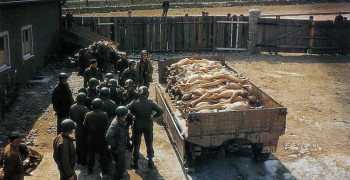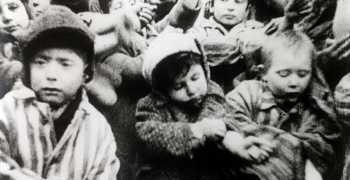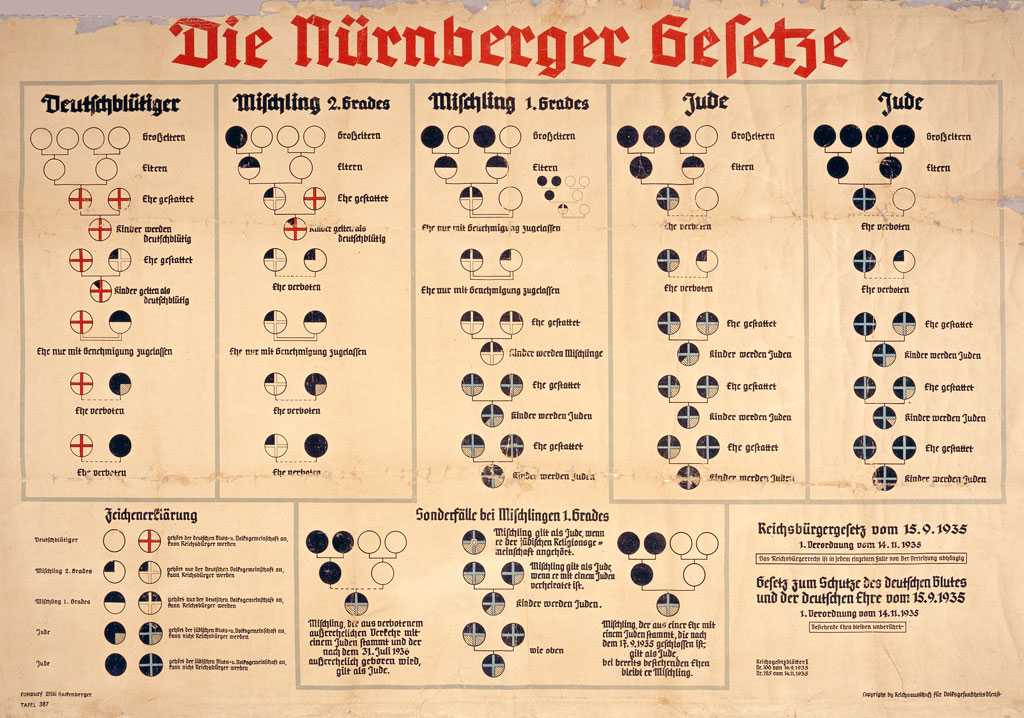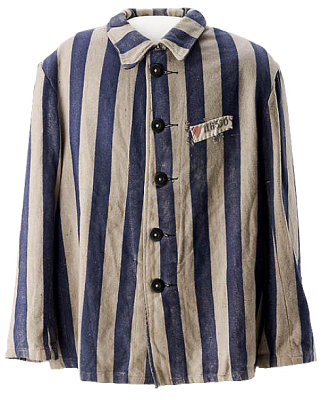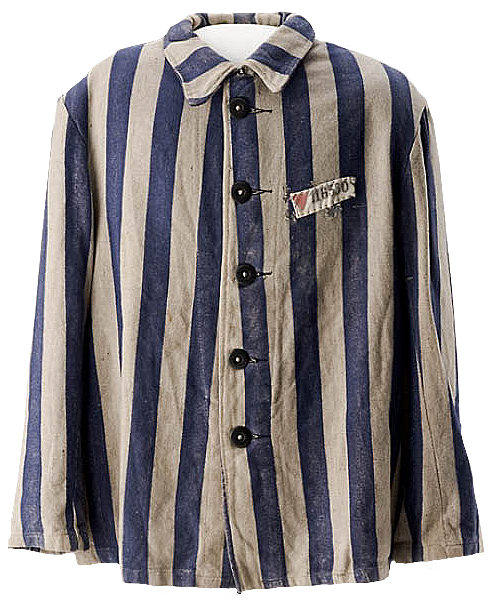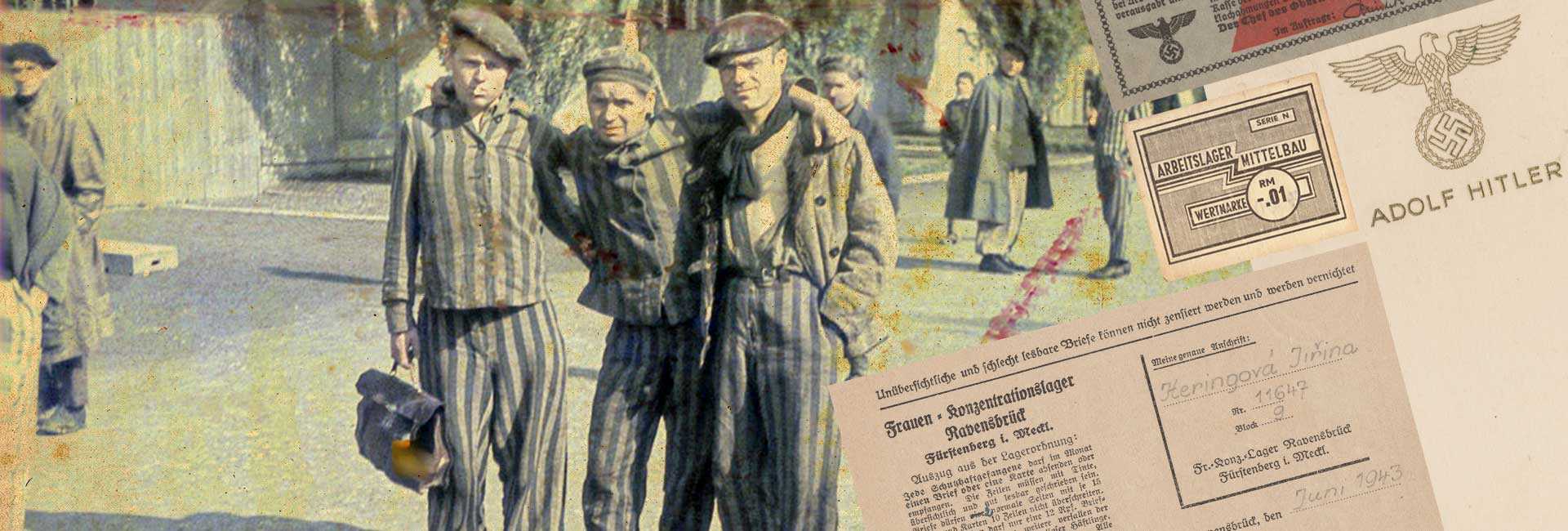
Comprehensive look at the Holocaust
The Holocaust in WW2
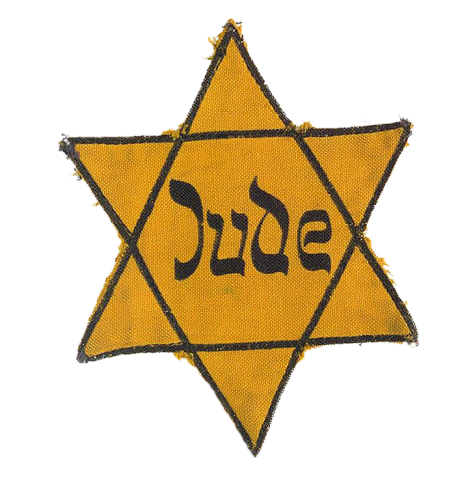
The Star of David
The Imposition of the Jewish Badge in Nazi-Occupied Territories
Following the German invasion of Poland on September 1, 1939, German authorities mandated the wearing of a "Jewish badge" in certain Polish towns and villages. The first town affected was Włocławek, where the decree was enforced on October 29, 1939. Governor General Hans Frank issued an order on November 23, 1939, requiring all Jews over the age of ten to wear a "Jewish Star," a white armband with a blue six-pointed star, on the upper right sleeve of their clothing. Severe penalties were imposed on those who did not comply. This requirement extended to men, women, and children.
On September 1, 1941, Reinhard Heydrich, (on the picture) Chief of the Reich Security Main Office (RSHA), mandated that all Jews in the Reich aged six and above wear a yellow Star of David on their chest. This yellow star-shaped badge bore the word "Jew" in the language of the respective country. For example, in the Netherlands, it read "Jood," while in France, it was "Juif.
Nazi transit-, concentration- and deathcamps
The history of Holocaust explained in facts
The history and the definition of the Holocaust also known as the Shoah (Hebrew) is exceptionally complex. Basically it can be stated that it was the Holocaust was the murder or genocide of the European Jews during world war 2. The word Holocaust is derived from the Greek word 'Holokauston' which, on itself, is a translation of the Hebrew word 'Olah'. In ancient times, Olah was a burn sacrifice ritual for God. The word Shoah in Hebrew (only used for the genocide of the Jews during WW2) literaly means: "catastrophe".
When was the Holocaust?
Roughly one can say that The Holocaust or Shoah took place between 1941 and 1945. Across German occupied Europe, the Nazis and their collaborators persecuted and murdered approximately six million Jews in a methodical, organised and state sponsored manner. Two third of Europe's Jewish population was murdered during the Holocaust. Among the victims of the Holocaust besides the Jews were Roma and Sinti people, disabled individuals (Aktion T4), homosexuals, and political dissidents.
Why did the Holocaust happen?
The Nazis believed that the German people were racially superior to other races. The Nazi prosecuted and murdered various groups of people. For example political opponents, homosexuals, "criminals' and the Roma (Eastern Europe) and Sinti (Western Europe) population. But mainly the Jews, were deemed inferior and was demonized into a imminent 'threat' to the racial ideology of the pure 'Germanic' bloodlines. Therefore they had to find a way to dispose of this threat
The legacy of the Holocaust
The legacy of the Holocaust is a complex and multifaceted one. It is a reminder of the dangers of intolerance, hatred, and discrimination. It is also a testament to the resilience of the human spirit, and the importance of fighting for justice and equality. The Holocaust has had a profound impact on both Jewish and non-Jewish societies. It has led to a greater awareness of the dangers of anti-Semitism and other forms of intolerance. It has also inspired a commitment to preserving the memory of the victims and to fighting against all forms of discrimination. The Holocaust has also had a significant impact on the development of international law.
The Convention on the Prevention and Punishment of the Crime of Genocide, which was adopted in 1948, was largely inspired by the Holocaust. The convention defines genocide as "acts committed with intent to destroy, in whole or in part, a national, ethnical, racial or religious group". The Holocaust is a reminder that even in the darkest of times, there is always hope. It is also a reminder that we must never forget the victims of this tragedy, and that we must always fight for justice and equality.
Difference between the Holocaust and concentration camps
The concentration camps can therefor not be equated with the Holocaust and were basically "just" a means of bringing about the Holocaust. This is because sometimes Jews were sent to concentration camps for work only. There are strong interactions and overlaps between the Holocaust and concentration camps because they coexcisted.
Concentration camps are in most peoples’ minds equal to the Holocaust, which is fully understandable but not historically correct.
What were the Nuremberg race laws?
The Nuremberg Laws were passed on 15 September 1935. They were a set of anti-Semitic laws enacted by Nazi Germany. The laws were named after the city of Nuremberg, where they were announced during the annual party rally of the Nazi Party.
The Nuremberg Laws consisted of two main pieces of legislation: the Reich Citizenship Law and the Law for the Protection of German Blood and German Honor. The Reich Citizenship Law stripped Jews of their German citizenship and defined them as "subjects" rather than citizens, while the Law for the Protection of German Blood and German Honor was a law against what the Nazis viewed as race mixing or 'race defilement' (Rassenschande). It prohibited marriages and extramarital sexual relationships between Jews and Germans.
The Nuremberg Laws were a key step in the Nazi persecution of Jews, and they paved the way for more extreme measures, such as Kristallnacht in 1938 and ultimately, the Holocaust.
The Nuremberg Laws led to the mass emigration of Jews from Germany and other parts of Europe, as well as the confiscation of their property and assets. Many Jewish scientists, artists, and intellectuals fled Germany, including Albert Einstein, Bruno Walter, and Gustav Hertz, who lost their positions and careers as a result of the anti-Semitic policies of the Nazi regime.
The legacy of the Nuremberg Laws and the Holocaust has had a profound impact on world history and remains a potent reminder of the dangers of racism, discrimination, and prejudice. The international community has since sought to prevent such atrocities from occurring again, including through the establishment of the United Nations and the adoption of the Universal Declaration of Human Rights.
(Click on the image for a larger view)
-
The laws were passed by the Reichstag, the German parliament, which was at the time controlled by the Nazi Party.
-
The laws were based on the Nazi ideology of racial superiority, which claimed that the Aryan race was superior to all other races.
-
The laws were intended to create a "racially pure" state by removing Jews from German society.
-
The laws were met with widespread protests from German Jews and their supporters, but they were ultimately upheld by the courts.
-
The Nuremberg Laws were a major turning point in the Nazi persecution of Jews, and they paved the way for the Holocaust.
The Holocaust was initiated by the Einsatzgruppen
The first murders of Jewish population (also called Holocaust by bullets) was carried out by so called "Einsatzgruppen". The history of these killing squads is important to understand how the Holocaust began.
The Final Solution

Wannsee Conference, 20 January 1942
The meeting was held in Villa Marlier in the Berlin suburb of Wannsee on 20 January 1942. Reinhard Heydrich, chief of the Reich Security Main Office or in German: Reichs Sicherheits Haupt Amt (RSHA), organizes the Wannsee Conference. The meeting, which lasted only 90 minutes, was attended by senior government officials of Nazi Germany and Schutzstaffel (SS) leaders.
Purpose of the Wannsee Conference
The purpose of the Wannsee conference, was to ensure the co-operation of administrative leaders of various government departments in the implementation of the Final solution to the Jewish question, whereby most of the Jews of German-occupied Europe would be deported to occupied Poland and murdered.
Who attended the Wannsee Conference
The following people participated in the meeting on the "Final Solution" of the Jewish question, held on 20 January 1942 at Am Grossen Wannsee 56-58 in Berlin.
Representing the SS at the Wannsee Conference

Reinhard Heydrich
Chief of the Reich Security Main Office Reichssicherheitshauptamt (RSHA)

Adolf Eichmann
Chief of the RSHA Department IV B 4 (Jewish Affairs)

Heinrich Müller
Chief of RSHA Department IV (Gestapo)

Eberhard Schöngarth
Commander of the RSHA field office for the Government General in Krakow, Poland

Rudolf Lange
Commander of RSHA Einsatzkommando 2, deployed in Latvia in the autumn of 1941

Otto Hofmann
Chief of SS Race and Settlement Main Office
Representing the agencies of the State at the Wannsee Conference

Roland Freisler
Ministry of Justice

Friedrich Kritzinger
Reich Cabinet

Alfred Meyer
Reich Ministry for the Occupied Eastern Territories German occupied Soviet Union.

Georg Leibbrandt
Reich Ministry for the Occupied Eastern Territories

Martin Luther
Foreign Office

Wilhelm Stuckart
Ministry of the Interior

Erich Neumann
Office of Plenipotentiary for the Four-Year Plan

Josef Bühler
Office of the Government of the Governor General German occupied Poland

Gerhard Klopfer
Nazi Party Chancellery
In the course of the meeting, Heydrich outlined how European Jews would be rounded up and sent to extermination camps in the General Government (the occupied part of Poland), where they would be killed.
Discrimination against Jews began immediately after the Nazi seizure of power on 30 January 1933. Violence and economic pressure were used by the Nazi regime to encourage Jews to voluntarily leave the country. After the invasion of Poland in September 1939, the extermination of European Jewry began, and the killings continued and accelerated after the invasion of the Soviet Union in June 1941.
Hermann Göring's authorisation for the Final Solution
On July 31, 1941, Hermann Göring, who was the highest-ranking member of the Nazi Party after Adolf Hitler, sent a letter to Reinhard Heydrich, who was the head of the Reich Main Security Office (RSHA) and also would become one of the chief architects of the Holocaust.
In the letter, Göring wrote that he had been instructed by Hitler to prepare a "Final Solution" to the "Jewish question" in Europe. He ordered Heydrich to submit a "general plan" outlining the administrative, material and financial measures necessary to carry out this task.
This letter is significant because it is one of the earliest known instances in which the Nazi leadership used the term "Final Solution" in reference to the genocide of European Jews. The letter also shows the high-level involvement of Nazi officials in the planning and execution of the Holocaust.

A concentration camp work outfit. One of the sinister outcomes of the Wannsee Conference: to imprison and annihilate the Western European Jews.

At the end of the meeting Heydrich gave Eichmann instructions about what was to appear in the notes. They were not to be verbatim: Eichmann ensured that nothing too explicit appeared in them.
Notes
In March 1947 Robert Kempner, the Chief Prosecutor in the Wilhelmstraßen Trial, received a collection of files from the Ministry of Foreign Affairs from the period of Joachim von Ribbentrop. These files were of course in German and had to be translated into English. Among the documents was Martin Luther's copy of the top secret notes of the Wannsee conference. These notes, and their translation, were the first reports of this meeting to be released. There had only been 30 copies of the notes. All other copies were destroyed before the end of the war.
What was the Katyn massacre?
After the sigining of the Molotov – Ribbentrop Pact, a non-aggression pact between Nazi Germany and the Soviet Union that enabled those powers to partition Eastern Europe between them. On 17 September 1939, the Soviet Union invaded Poland from the east, 16 days after Nazi Germany invaded Poland from the west starting World War 2.
Immediately after the Soviet attack on eastern Poland, tens of thousands of Poles had been rounded up and taken to camps in Russia, along with fifteen thousand prisoners of war. With the arrest of the intellectual elite of the Polish population, Stalin hoped to nip any opposition to communism in the bud. The Soviet attack on Poland that led to the Katyn massacre was part of an attempt by the Russians to restore the borders of 19th century Tsarist Russia.
Katyn is a Russian village, which is located about 20 km west of the city of Smolensk.
It was one of three locations where the NKVD executed a total of approximately 25.700 Polish civilians, clergy and military personnel. The mass graves were then planted with trees. The order for the assassination was given by the Central Committee, signed by Stalin. The order was the result of a decision by NKVD chief Lavrenti Beria to shoot more than 25.000 landlords, manufacturers, former officers, officials and defectors. The concentration camps in which the Poles had been imprisoned had to be liberated because of the arrival of 50.000 to 70.000 inhabitants of the Baltic states, many of whom would later also be murdered.
The massacre of Katyn took place in April - May 1940. Around 4.443 Polish officers were murdered by the NKVD, the secret service of the Soviet Union and predecessor of the KGB. The nearby forest was long used by the NKVD as an execution site.
The murder of more than 25.000 Polish civilians, clergy and soldiers was largely carried out in April - May 1940 by NKVD General Vasili Blochin. Blochin was decorated with the Order of the Red Banner later that year.
Discovery of the Katyn massacre
Until 1943 nothing was known about the fate of the arrested and POW Poles. On April 13 of that year, the Germans found mass graves in Katyn containing about three thousand corpses with Polish identity papers. During later excavations, another 1.200 corpses were found. The free western countries received all kinds of reports of massacres taking place in occupied Europe. This forced the Nazis to find a way to hide the evidence for their war crimes. SS-Standartenführer Paul Blobel was appointed head of Sonderaktion 1005 in March 1942. The operation only started in June, after the assassination attempt on Reinhard Heydrich, and started in the Chelmno extermination camp, where the bodies were burned after exhumation.
Sonderaktion 1005
Sonderaktion 1005, also known as Enterdungsaktion, was the code name for the Nazis large-scale operation to destroy all evidence of the Holocaust during WW2. The operation was started in June 1942 and lasted until the end of 1944.
The work of Aktion 1005 was mainly performed by prisoners. They were forced to open the mass graves and burn the bodies in large pyres. After all the bodies in that particular spot were burned, the site was leveled, plowed and planted. This to create the appearance that it was just a natural area. The prisoners who took part in Aktion 1005 were regularly murdered and replaced by other prisoners, in order to guarantee the secret nature of the operation. There are some known cases where prisoners tried to escape this fate, but those attempts were not successful.
In June 1943 the Germans also started burning bodies in the other parts of Poland and the Soviet Union. For this purpose, two special Sonderkommandos were created, consisting of prisoners. One Sonderkommando worked in the vicinity of Berdichev and Zamosc. In the Ukraine they cleared the graves of camp Janovska near Lviv. The other Sonderkommando worked in the regions around Riga and Dvinsk. Sonderaktion 1005 also moved to areas in Belarus and the Baltic States, where bodies of Russian prisoners of war were burned.
In mid-1944, the activities of Sonderaktion 1005 mainly focused on the Government General in Poland. The operation soon moved to German-annexed areas of Poland as well. Operations also took place in Yugoslavia, including at Jasenovac concentration camp
Concentration and deathcamps in Europe
In concentration- and death or extermination camps such as Auschwitz, Bełżec, Chełmno, Majdanek, Sobibór, and Treblinka which were located in occupied Poland, the Nazi murdered on an industrial scale. From 1933 to 1945, Nazi Germany operated more than one thousand concentration camps on its own territory and in parts of German occupied Europe all were run exclusively by the SS.

Vasili M. Blochin
Vasili Mikhailovich Blochin born in Gavrilovo on January 7, 1895 was a Russian major general of the NKVD who played an important role as an "executioner" in carrying out Joseph Stalin's Red Terror. Also responsible for the Katyn Massacre. He died in Moscow on February 3, 1955.

Paul Blobel
Paul Blobel born on 13 August 1894 in Potsdam Germany, was a Nazi commander of
- Sonderkommando 4a of Einsatzgruppe C
- Sonderaktion 1005
After the war he was sentenced to death by the US Nuremberg Military Tribunal in the Einsatzgruppen trial. Up to 59.018 killings are credited to Blobel, although he claimed to have killed 10.000 - 15.000 people. He was hanged at Landsberg Prison shortly after midnight on June 7, 1951.
The Einsatzgruppen and their auxilliaries and collaborators perpetrated war crimes with mass shootings of Jews in the occupied territories in Eastern Europe. Around 2 million Jews were murdered in these mass shooting massacres also known as "Holocaust by Bullets'.

Mischlingen / Half breeds
A difficult issue at the Wannsee Conference was the treatment of Jews born of mixed Jewish-non-Jewish marriages or those whose grandparents were Jewish. The Nazis called them "Mischlingen" (half-breeds in English) 1st and 2nd degree. No agreement was reached on that. Often people with this or similar backgrounds ended up in the concentration camps. There were some differences with regard to the Nuremberg Race Laws of September 15th, 1935. The most striking addition is the sterilization as an escape clause. There are also some minor adjustments:
- Who were married before September 17, 1935 to someone of German blood. Their children (Mischlingen 2nd degree) are also equal to Germans.
- Indispensable for the state. If their status changes in the future, they would become Jews again.
- Mischlingen 1st degree of these two categories who did not allow themselves to be sterilized were considered Jews.
- Descended from two Mischlingen of the 2nd degree.
- Have a distinctively Jewish appearance.
- Acting and feeling like a Jew.

Law for the Safeguard of German Blood and German Honor barred marriage between Jews and other Germans.
The origin of the Nazi ghettos
The SS and German authorities concentrated the Jewish population in ghettos during WW2. A ghetto was often an enclosed area of a town in which Jews and so called 'enemies of the Reich' were separated from the non incarcerated people.
The Nazis saw the ghettos as a temporary measure to control and segregate the Jews while their leadership in Berlin debated over the options to achieve the final goal of removing all of the Jewish population.
Living conditions were miserable and food was scarse. The Nazis established at least 1.100 ghettos across the occupied countries in Eastern Europe.
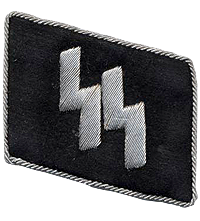
The SS (or Schutzstaffe) was originally a paramilitary elite organisation that acted as Adolf Hitler's personal bodyguards and was founded in 1925. The SS was solely responsible for running the the concentration camps and deathcamps and for setting up each ghetto and ensuring that the administration of the ghettos ran smoothly.

